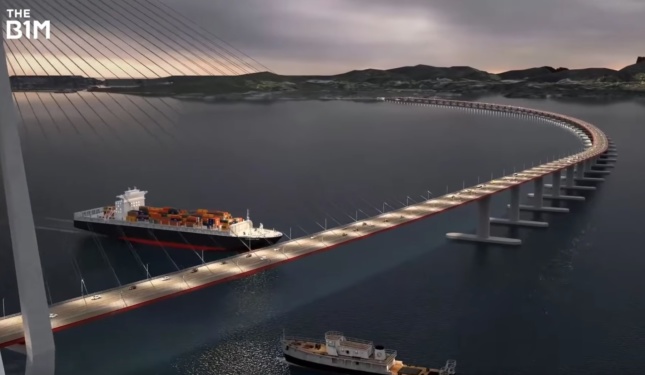A $47 billion proposal to link together Norway’s wild western coastline is the nation’s largest and toughest infrastructure project yet, according to NPR. The project’s new highway would connect Oslo in the southeast to the coastal cities of Bergen, Stavanger, Alesund, and Trondheim, replacing numerous ferries with tunnels and bridges. But because of challenging geography, architects and civil engineers have been forced to develop new and inventive ideas to complete the route.
After decades of building roads all over the country, the Norwegian Public Roads Administration (NPRA) understands the nation’s waterways, full of endless mazes of fjords and lakes, were not designed to be conquered by the automobile. And with its freezing weather and rugged mountain soil, only a select especially acclimated number of people inhabit this area of Scandinavia—a number that decreases yearly.
Most attribute depopulation in these areas to a lack of accessibility. All local road transportation relies on small highways that crisscross the region’s valleys, and the only way to navigate past most waterways is by ferry, which can take upwards of 45 minutes each; in some areas, driving to the neighboring city can require three ferry trips. Mayor Martin Kleppe of Tysnes, a region of rural municipalities located on an archipelago off the coast, told NPR that, “The ferry is a beautiful trip, but it’s more an obstacle than a good connection.” Tysnes’s population has decreased by 50 percent over the last century, a decline the project is meant to counter.
But where there’s a challenge, there’s a solution. The renderings and video released by the NPRA for the project depict some grand ideas—suspension bridges, tunnels, underground junctions—to link all waterways, connect remote island towns, and drastically improve accessibility to the region from the rest of Scandinavia. If completed, the project would contain a number of record-breaking engineering marvels: the suspension bridge at Sognefjord, for example, would have 1,500-foot-high towers and its 12,100-foot-long span would dwarf even the Akashi Kaikyo Bridge and the Millau Viaduct.
But it is not all figured out quite yet. The NPRA’s greatest challenge is at the Sula fjord, the deepest and the widest of them all, and an important shipping route. To cross the 3 miles of water while leaving the 66-foot-high clearance for boats to pass, engineers stand with two likely proposals. The first is a rather awkward three-tower suspension bridge. The two exterior towers would be placed on land, the center tower being anchored to the seafloor.
The second proposal is the first of its kind in the world: a submerged tunnel tethered not to the seabed below, but above to floating pontoons. While many other underwater tunnels already connect vast waterways—those of Chesapeake Bay, from Copenhagen to Malmö, and Hong Kong to Macau, for instance—one that floats could open new doors in the civil engineering world.
A project of this magnitude is going to not only make a massive mark on Norway’s majestic landscape and make life easier for its residents, but it will also open the area to the rest of the world. This endeavor may put the global spotlight on the far north.
